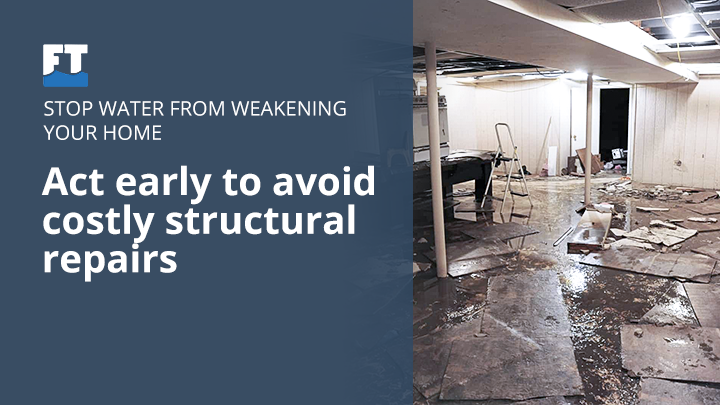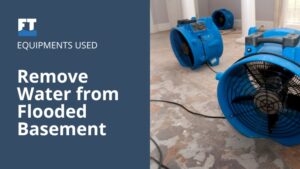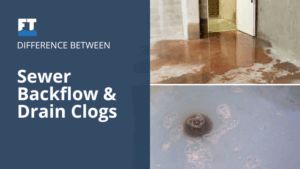At first glance, a little water might not seem like a big deal—a damp wall, a puddle in the basement, or a stain on the ceiling. But what you can’t see could be telling a different story. Water has a quiet way of sneaking deep into your home, far beyond what’s visible on the surface.
In this article, we’ll answer the question: Can water damage weaken your home’s structure? Knowing the signs and acting early can help protect your home from serious (and costly) damage.
Yes—Water Damage Can Weaken Your Home’s Structure
Water might seem harmless, but once it gets into your home’s structure, it can cause real trouble. Water damage can seriously weaken your home’s structure if it’s left unchecked. It doesn’t matter if it’s from a leaky roof, a busted pipe, or a small flood—once water gets into the walls, floors, or foundation, it starts breaking things down. Wood can rot and lose strength.
The real problem is that you might not see the damage right away. Water often hides behind walls or under floors, slowly worsening the situation. You may not notice it until the floor starts sagging or the wall shows cracks. That’s why it’s important to learn the warning signs of water damage—like musty odors, bubbling paint, or unexplained stains—before things get worse. You may not notice it until the floor starts sagging or the wall shows cracks. Even small leaks or water stains should never be ignored. Fixing water damage early can save you from costly repairs later.
How Water Gets In
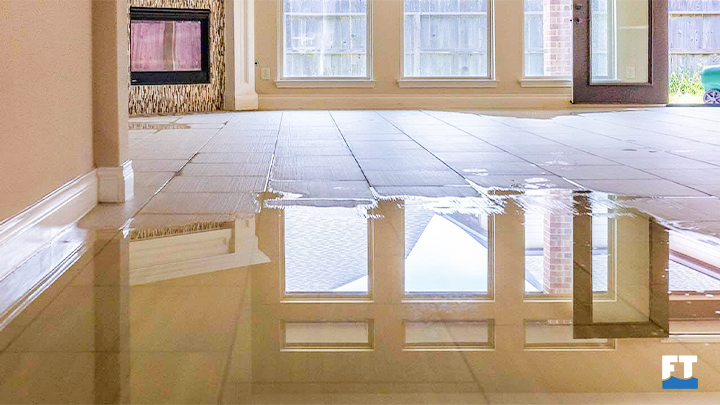
Water can seep in from various sources, including a leaky roof, busted pipes, a high groundwater level, or poor drainage. Once inside, it can travel behind walls, under floors, and into crawl spaces. Often, the visible signs don’t tell the whole story. Hidden moisture can quietly eat away at crucial parts of your house. That’s why surface stains often point to deeper issues.
What Parts of the Structure Are Most at Risk?
Wood and Framing
Wood soaks up water and can warp, swell, or start to rot. That means your load-bearing beams and wall studs might begin to lose strength. If you’ve noticed sagging floors or uneven surfaces, wood rot can be the source. Left unchecked, the framing can weaken enough to affect your home’s stability.
Drywall and Ceilings
Drywall acts like a sponge when wet. It can swell, crumble, or bubble. That’s more than just an eyesore—it’s a sign the material can’t hold weight anymore. Ceiling sagging or peeling walls? It could be water warping the wallboard.
Foundation and Concrete
Water outside your foundation pushes soil out of place. That can lead to cracks, shifting, and even structural damage over time. If water freezes in those cracks, it expands and worsens the damage. Your foundation might move, and your floors and walls might follow.
Metal Support & Fasteners
Water corrodes nails, brackets, and even steel beams. Rusted metal doesn’t grip like it should, which can lead to weak joints and points of failure.
Signs That Water Damage Is Harming the Structure
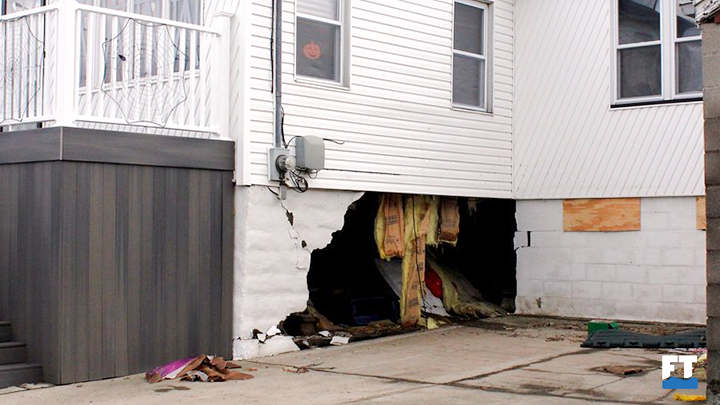
- Sagging or uneven floors – Wooden joists may rot and sag under weight.
- Doors and windows that stick – Shifting frames can indicate structural movement.
- Cracks in walls or foundation – Horizontal cracks often point to pressure from shifting soil.
- Warped walls or bowed siding – Damp drywall or framing can bow inward or bulge.
- Musty smells or mold – Mold thrives in damp conditions and might indicate hidden moisture.
What to Do If You Suspect Water Damage
Think something’s off? Maybe your wall feels soft, or there’s a musty smell you can’t shake. If you even slightly suspect water damage, don’t wait around—it’s important to act fast and identify the causes of water damage before it spreads or worsens.
First, shut off the water if you know where the leak is coming from, like a broken pipe or a dripping home appliance. This stops the problem from getting worse while you figure out your next move.
Next, call a professional water damage restoration company right away. Experts have the tools and experience to identify hidden issues, prevent mold growth, and safely repair structural damage. Delaying this step can make the damage harder—and more expensive—to fix later.
Then, take photos and notes of anything that looks damaged. That includes stains, warped wood, peeling paint, or wet spots. These pictures can help you file an insurance claim if the damage is covered.
Finally, dry the area out as fast as you can. Use fans, open windows for airflow, and plug in a dehumidifier if available. Aim to get things dry within 24 to 48 hours. This short window is crucial for preventing further issues, such as mold or mildew, from spreading. Moisture left behind can seep deeper into walls and floors, quietly damaging the structure of your home over time. Even a small, damp spot can develop into a much larger problem if left unattended.
Don’t Wait—Protect Your Home’s Structure from Water Damage
If you’ve noticed sagging floors, musty smells, or even a small leak, don’t wait for it to get worse. The Flood Team is here to help with 24/7 emergency water damage restoration services. Our experts know how to spot the signs, stop the damage, and restore your home safely—before it turns into a bigger, more expensive problem.

Final Thoughts
Yes, water damage can weaken your home’s structure. It eats away at wood, cracks concrete, and corrodes metals—all silently. Learning the signs—sagging floors, warped walls, sticky doors—helps you act early. Fixing leaks and stopping moisture keeps your house safe, strong, and standing tall for years.
FAQs
Can a small leak weaken my house?
Yes. Even a minor leak can cause rot or corrosion if left untreated. Address it quickly.
How fast does water damage become structural?
It depends, but mold starts within 2 days, and wood rot can follow in a few weeks.
Will homeowner’s insurance cover structural water damage?
Often, yes—if it’s sudden (like a burst pipe). Not if it’s from neglect. Check your policy.
Can I fix structural water damage myself?
Minor repairs may be suitable for a DIYer. However, deep-rooted rot or foundation issues require professional expertise.
How do experts repair foundation damage from water?
They can seal cracks, install waterproofing, add drainage, or reinforce foundations with piers.

